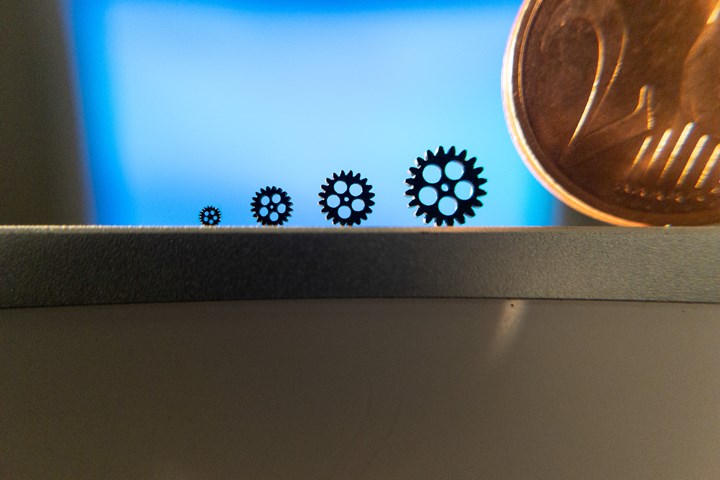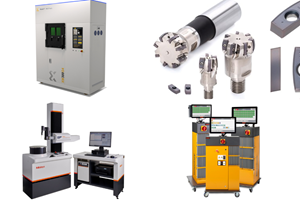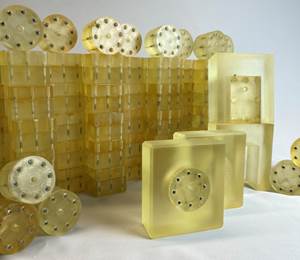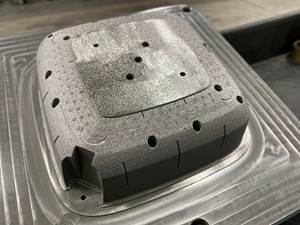Accumold Invests in Micro AM Capability
The purchase of a second Fabrica 2.0 machine compliments Accumold’s existing micro mold technologies and services, driving continuous, disruptive innovation for customers.
Micro molding innovator Accumold has announced a further investment in its micro additive manufacturing (AM) capability, having just finalized the purchase of a second Fabrica 2.0 machine from Nano Dimension. The continued integration of precision micro AM at Accumold complements the micro molding services that the company already provides and which it says it has has been innovating for more than 30 years.
“We have invested in micro AM, more specifically the Fabrica 2.0 machine from Nano Dimension, not as a replacement technology, but something complimentary to our existing technology portfolio,” Aaron Johnson, VP marketing and customer strategy at Accumold, says. “It will make the prototype stage of the product development process that much more flexible, and quicker for our customers. In time, it will move toward small- to medium-sized production runs and also promote creative geometric complexity, and mass customization. The continued investment in micro AM is another step in our disruptive journey, a journey we have been on for decades and which we will continue on for decades to come as we lead the quest for the smallest features on the most innovative products possible.”
Micro AM appeals to an array of Accumold’s customers that, up until now, have not been able to cost-effectively or efficiently fulfill design intent using traditional manufacturing processes. In addition, the technology is agnostic to part complexity, and therefore enabling the manufacture of hollow structures, holes, complicated interior details and atypical shapes, promoting innovation.
“Micron-level detail can be achieved without the need to fabricate tools [molds], and this means that you can have intricate and geometrically complex prototypes in a matter of hours.”
While the Fabrica 2.0 can cater for volume applications (multiple thousands of small parts and components fitting easily in the machine’s 50 × 50 × 100 millimeter build envelope), the introduction of an AM solution for micro manufacturers also means that OEMs are able to reduce the reliance on economies of scale, as the technology makes full production runs measured in thousands as inexpensive as producing one. Micro AM technology makes low- to medium-volume production runs possible that have previously been uneconomical due to the high tooling and setup costs associated with traditional manufacturing alternatives.
“In general terms, success through the use of the Fabrica 2.0 is measured in microns and hours,” Johnson continues. “Micron-level detail can be achieved without the need to fabricate tools [molds], and this means that you can have intricate and geometrically complex prototypes in a matter of hours. With increased complexity comes increased cost, but not when using the Fabrica 2.0 micro AM technology. Through the use of the Fabrica 2.0, you can also optimize workflow, the technology producing less scrap and fewer tools than conventional manufacturing processes. It also promotes the reduction of iterative process, assembly and inventory. This means that significant operational cost benefits are now attainable at the micro manufacturing level for our customers.”
Accumold has been a Beta customer of Nano Dimension’s Fabrica 2.0 system since May 2021. Following the performance of the system and how it has helped the company meet customer needs, Accumold decided to purchase the Beta system and an additional Fabrica system to further leverage the benefits of the technology’s 3D micro-printing capabilities. As a versatile technology appropriate for prototyping, small batches and potentially even mass manufacturing, Accumold believes the technology is now stimulating innovation in the micro manufacturing sector.
Read “Toolroom Perspective on Micro Molding” and “Four Micro Tooling Considerations” for additional resources related to this topic.
Related Content
Products and Services for Multiple Moldmaking Needs
New year, new technology roundup! Featured here is a collection of product offerings, from profile milling cutters to industry-specific CAD/CAM software to innovative hot work tool steels.
Read MoreIn "Hybrid" FIM Process, 3D Printing Complements Injection Molding
Alpine Advanced Materials used a desktop 3D printer and the freeform injection molding process to reduce prototype tooling production time and cost for its customers.
Read More3D Printing Innovates Hot Runner Manifold Design
Metal 3D printing combined with a conventionally machined manifold block overcomes flow shadows on valve gates and offers faster color changes while providing closer system pitch centerlines between cavities.
Read MoreA 3D Printing Retrospective
A personal review of the evolution of 3D printing in moldmaking throughout the past 25 years.
Read MoreRead Next
Are You a Moldmaker Considering 3D Printing? Consider the 3D Printing Workshop at NPE2024
Presentations will cover 3D printing for mold tooling, material innovation, product development, bridge production and full-scale, high-volume additive manufacturing.
Read MoreHow to Use Strategic Planning Tools, Data to Manage the Human Side of Business
Q&A with Marion Wells, MMT EAB member and founder of Human Asset Management.
Read MoreHow to Use Continuing Education to Remain Competitive in Moldmaking
Continued training helps moldmakers make tooling decisions and properly use the latest cutting tool to efficiently machine high-quality molds.
Read More


























